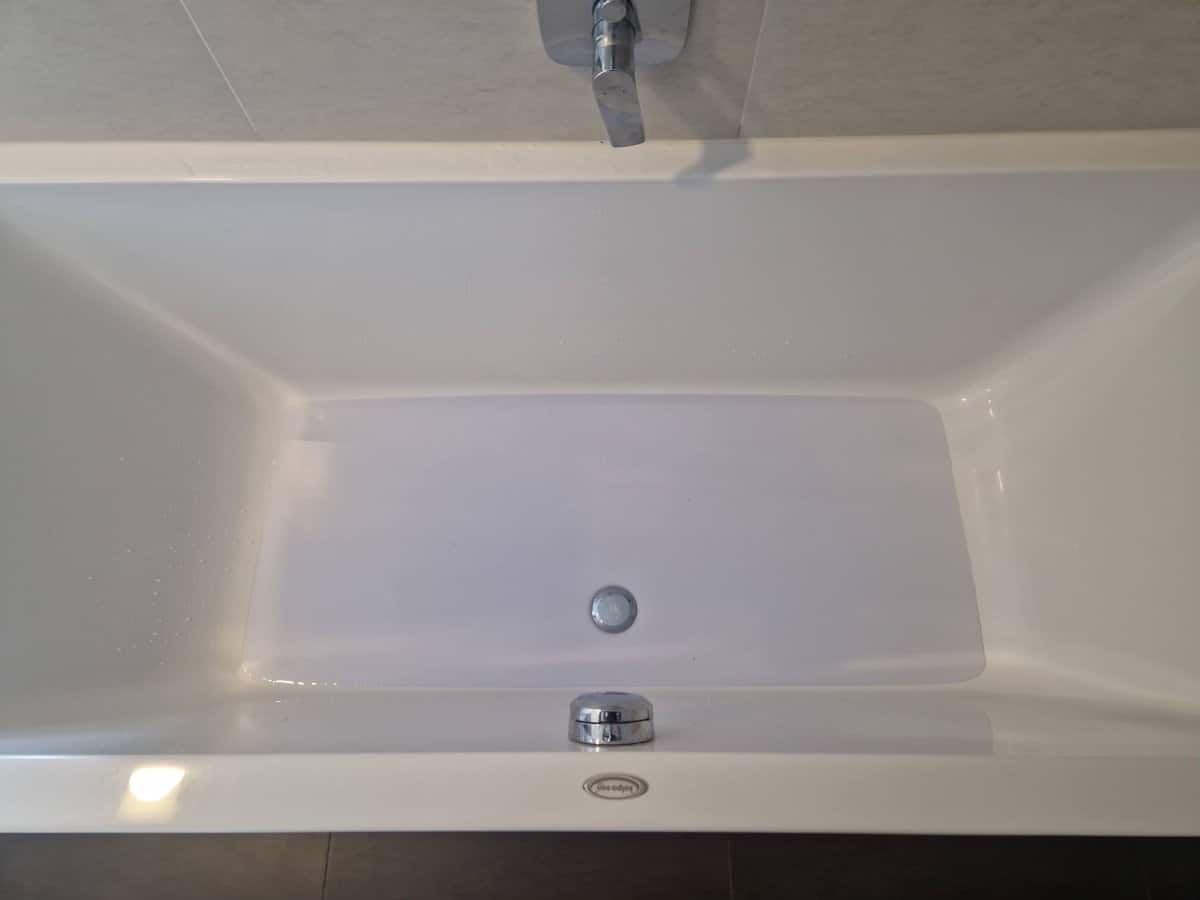The blue color in your bath water is most likely due to the presence of copper in the water. When copper is exposed to oxygen, it turns a bluish-green color. This blue color can be transferred to your skin and clothing when you bathe in water that contains copper.
While the blue color may be harmless, it can be a sign that your water contains high levels of copper. High levels of copper can be toxic and may cause health problems. If you are concerned about the blue tint of your bath water, you should contact your local water authority to have your water tested for copper.
How does copper end up in my bath water?
Copper can enter your water through the pipes that deliver water to your home. Over time, copper pipes can corrode and release small amounts of copper into the water. Copper levels in public water supplies are closely regulated to ensure that they remain safe for human consumption. However, private wells are not subject to these regulations, and therefore, may have higher levels of copper.
What are the health effects of copper exposure?
Exposure to high levels of copper can cause nausea, diarrhea, vomiting, and abdominal pain. In severe cases, it can lead to liver damage, kidney failure, and death. Children and infants are particularly vulnerable to the effects of copper exposure. Pregnant women and women who are breastfeeding should also avoid exposure to high levels of copper.
How to fix blue bath water
If you are concerned about the level of copper in your water, you can have your water tested by a certified laboratory. If the test results indicate that the level of copper in your water is higher than the safe limit, you will need to install a water filtration system that is designed to remove copper from water. This will remove the copper from your water and make it safe to drink and bathe in.
Water Filtration System
A water filtration system is a device that removes impurities from water by using a physical barrier, chemical process, or biological process. Common impurities removed include particulates such as dirt, sand, rust, and copper; chlorine; harmful chemicals such as herbicides and pesticides; and microorganisms such as bacteria and viruses.
Water filtration systems can be used in both residential and commercial settings. In most cases, these systems are installed in line with the home’s existing water supply line. This ensures that all of the water coming into the home is filtered, providing clean water for drinking, cooking, and bathing.
There are a variety of different types of water filtration systems available on the market, each designed to remove different types of impurities. The most common type of system is a whole-house filtration system, which filters all of the water coming into the home. These systems are typically installed by a professional plumber.
Other common types of water filtration systems include countertop filters, faucet-mounted filters, under-sink filters, and pitcher filters. Each of these types of filters is designed to filter a specific amount of water and must be replaced periodically.
To choose the right type of water filtration system for your home, it is important to first determine what types of impurities are in your water. Once you know what needs to be filtered, you can then select a system that is designed to remove those specific impurities.
Installing a water filtration system is typically a fairly easy process. In most cases, the filter can be installed directly onto the home’s existing water supply line. However, it is always best to consult with a professional plumber to ensure that the system is installed correctly.
Some other common methods of copper removal include reverse osmosis, ion exchange, activated carbon filters, and water softeners.
Reverse Osmosis
Reverse osmosis is a process that is used to remove contaminants from water. The process works by using a semipermeable membrane to remove impurities from water. The water is forced through the membrane, and the impurities are left behind. This process can be used to remove copper from water. Copper is a contaminant that can cause health problems if it is consumed in large amounts. Reverse osmosis can remove copper from water, and this can help to protect people from health problems.
Ion Exchange
Ion exchange is a type of water treatment that is used to remove certain contaminants from water. Ion exchange works by exchanging ions between the water and a resin. The resin is a material that is coated with charged ions. When the water comes into contact with the resin, the ions in the water are attracted to the charged ions in the resin. This exchange of ions removes contaminants from the water.
Activated Carbon Fibers
Activated carbon fibers (ACFs) are a type of adsorbent that can be used to remove copper from water. ACFs are made from high-quality, ultra-pure carbon that has been treated to increase its adsorptive capacity. The surface area of ACFs is extremely large, which allows them to absorb large amounts of copper from water. ACFs are often used in water treatment plants to remove copper from the water before it is distributed to homes and businesses. ACFs can also be used in home water filtration systems to remove copper from drinking water.
Water Softener
Another option is to install a water softener which will remove the copper from your water. Water softeners are available at most hardware stores. A water softener is a device that is used to remove hard minerals from water.
Water softeners work by exchanging hardness minerals for sodium or potassium ions. Water softeners are often used in homes and businesses where hard water is a problem. Hard water can cause a variety of problems such as scale buildup on plumbing fixtures and appliances, and it can make laundry difficult. Water softeners can help to extend the life of your plumbing and appliances, and make laundry easier.
Water softeners can be used to remove copper from water. Copper is a hard mineral, so the ion exchange process that is used by water softeners can help to remove it from water. This can be beneficial if you have hard water and are experiencing problems with scale buildup or laundry.
Plumbing Replaced
If you have high levels of copper in your water, you may need to have your home’s plumbing replaced. This is a costly and time-consuming process, but it is the only way to remove all of the copper from your water. If you are concerned about the blue color of your bath water, you should contact a plumber to discuss your options.

